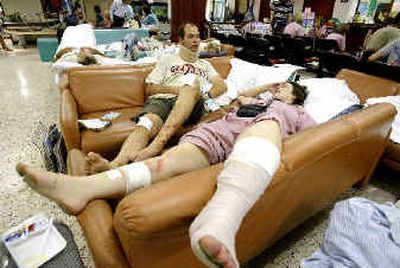A mad scramble to safety through swiftly rising waters

AMBLANGODA, Sri Lanka – The twisted limbs of the frail girl in a blue dress were caught in a garden fence by the sea. She may have been dead already, but no one stopped to check – there was too much tragedy going on all around as the water kept coming.
When the tsunamis hit southern Sri Lanka, I had gone to the seaside to drop off my parents at a Buddhist ceremony. Sunday was the Poya, a full-moon day. We Buddhists believe Buddha was born, attained enlightenment and died on a full-moon day, so such days are a time for his followers to spend in reflection.
It was after I had dropped my parents off at the shrine in Amblangoda and I was driving back to the capital, Colombo, that I got a message on my cellular phone that some parts of coastal Sri Lanka had been hit by unnaturally big waves.
I didn’t need the message to tell me. People were running everywhere, and the first waves hit the road.
The first waves were not huge, not too destructive. They brought fish to the shore, and people rushed to collect them. Smiling young boys ran with fish dangling in their hands.
But then another set of waves crashed ashore, much more powerful.
I parked my SUV and climbed on its roof, thinking I was safe there. I started taking pictures – my cameras are always with me in the car in case I stumble across a news picture. But the water kept rising. And rising. In a few minutes my SUV was submerged and I suddenly slipped into the water.
I struggled through the water, joining the crowds running for higher ground, some of them carrying their dead and injured. White-capped flood waters raced over the streets and between houses.
I counted 24 bodies in a stretch of just under four miles. Bodies of children were entangled in wire mesh used to barricade seaside homes. Bodies were carried up to the road, covered with sarongs and laid out for relatives to find. Rows and rows of women and men stood on the road, asking if anyone had seen their loved ones.
I was still in a daze, and the enormity of the tragedy still hadn’t dawned on me until I came upon the girl in the blue dress, caught in a fence.
It was only when the flood waters began to recede that it was possible to check and make sure. The girl, who appeared about 4 to 6 years old, was dead.